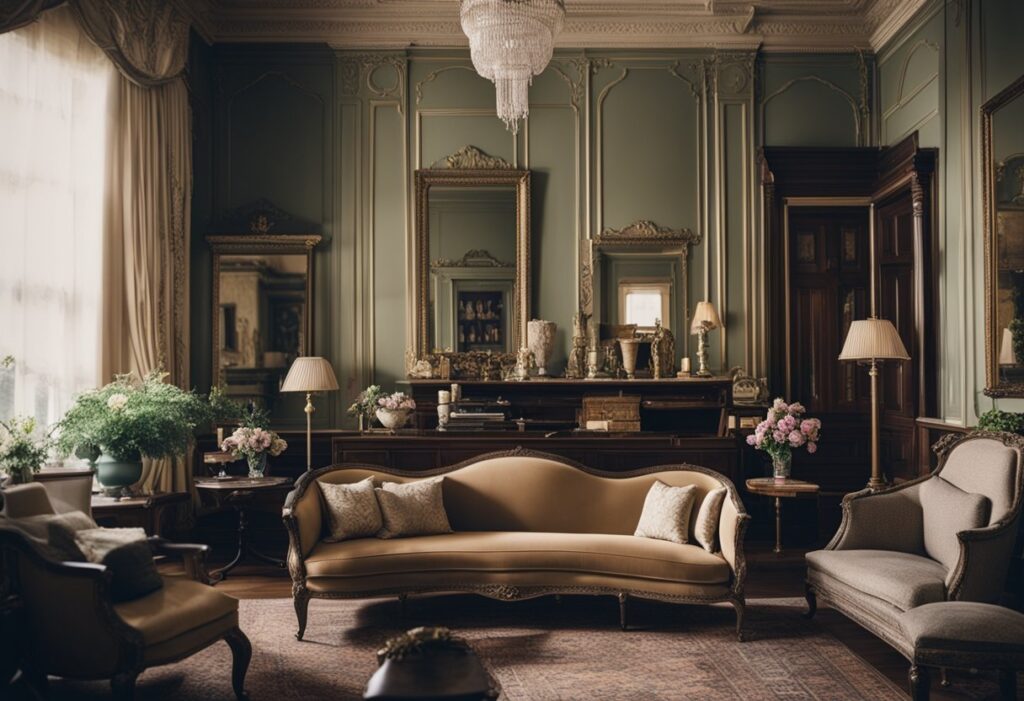The Edwardian era, though officially lasting only from 1901 to 1910 during the reign of King Edward VII, represents a pivotal and often overlooked period in British design and architecture. It served as a “Golden Middle Ground,” offering a refreshing antidote to the heavy, cluttered aesthetic of the preceding Victorian age while subtly paving the way for the sleek, functional simplicity of 20th-century Modernism.
Edwardian style is defined by a desire for light, air, and practicality—a shift that fundamentally changed how the British lived and built.
1. Escaping Victorian Clutter: The Pursuit of Light and Space
The Victorian era (1837–1901) was characterised by moral earnestness, industrial progress, and a maximalist approach to interior design—think dark colours, elaborate wallpaper, heavy drapery, and furniture filling every corner. The Edwardian reaction was one of relief and lightness.

Key Architectural Shifts:
- Wider, Brighter Houses: Edwardian homes were typically built lower and wider than their Victorian counterparts, often featuring a distinct porch and a larger, more symmetrical footprint.
- The Rise of the Sash Window: Crucially, the size of windows increased significantly. Large sash windows flooded interiors with natural light, a stark contrast to the often shadowy Victorian rooms.
- Open-Plan Beginnings: While not truly open-plan by modern standards, Edwardian houses introduced wider hallways, fewer internal doors, and rooms that flowed more easily into one another, improving air circulation and social accessibility.
2. Architectural Influences: Classical and Quaint
Edwardian architects eschewed the Gothic revival beloved by the Victorians. Instead, they embraced a mix of styles that looked back to the Georgian (Neo-Classical) symmetry while also incorporating the informal sensibilities of the Arts and Crafts Movement.
- Neo-Georgian Revival: This style championed classical elements: symmetry, white-painted wood detailing, and lighter colour palettes derived from 18th-century architecture. This added a sense of restrained elegance.
- Arts and Crafts Influence: This highly influential movement brought an appreciation for natural materials, craftsmanship, and a return to simpler, pre-industrial forms. Edwardian homes often feature roughcast render mixed with exposed timber framing and traditional red brick—a quaint, domestic look that was comfortable rather than intimidating.
3. Interior Design: Simple Elegance and Technological Ease
The Edwardian interior maintained a high standard of comfort but dispensed with the suffocating layers of Victorian stuff.
| Design Element | Victorian Approach | Edwardian Approach |
| Colour Palette | Dark, deep, and rich (Burgundy, Navy, Forest Green). | Light, airy pastels (Cream, Pale Yellow, Duck-Egg Blue). |
| Wall Coverings | Heavily patterned, often embossed or flocked wallpaper. | Less patterned papers, plain paint, or simpler stencilled friezes. |
| Furniture | Dark, heavy, oversized pieces; emphasis on decoration. | Lighter, often wicker or bamboo furniture; focus on comfort and utility. |
| Technology | Gas lighting, complex plumbing often added later. | Electric light (a significant status symbol), built-in storage, and modern kitchens/bathrooms. |
The introduction of reliable electricity was perhaps the greatest innovation, replacing the soot and heat of gaslight and allowing for cleaner, more flexible room layouts.
4. The Bridge to Modernism
The Edwardian style’s greatest significance lies in its role as a transitional period. By prioritising the following concepts, it laid the groundwork for the functional design philosophies of the 20th century:
- Function over Form: The move towards built-in cupboards, modern plumbing, and more sanitary, easily cleaned surfaces anticipated the modernist focus on utility.
- Minimal Ornamentation: The rejection of Victorian excess led to a cleaner aesthetic, where the structure itself (e.g., exposed timbers or simple plasterwork) became the decoration.
- Emphasis on the Everyday: Design began to focus on the needs of the average family rather than on displaying wealth, a democratic approach later fully embraced by modernist designers.
In essence, the Edwardian era successfully married the traditional British love of comfort and home with a new spirit of simplicity and light. It provided the necessary ‘soft landing’ between the dark, ornate past and the bright, unadorned future of architectural design.



